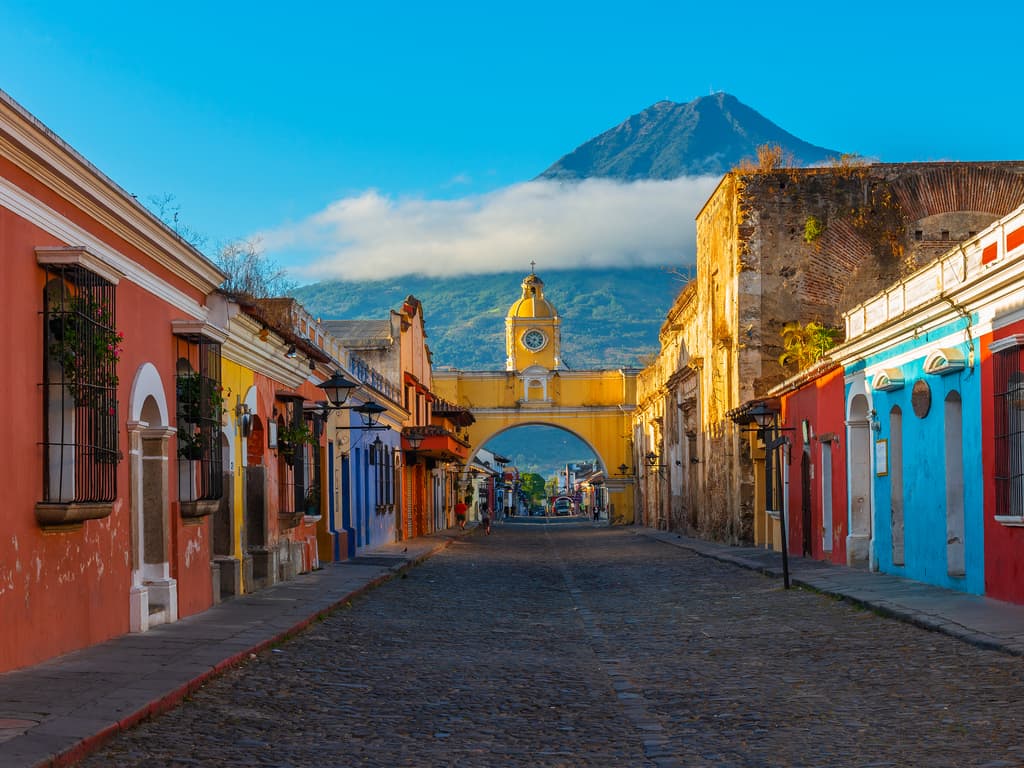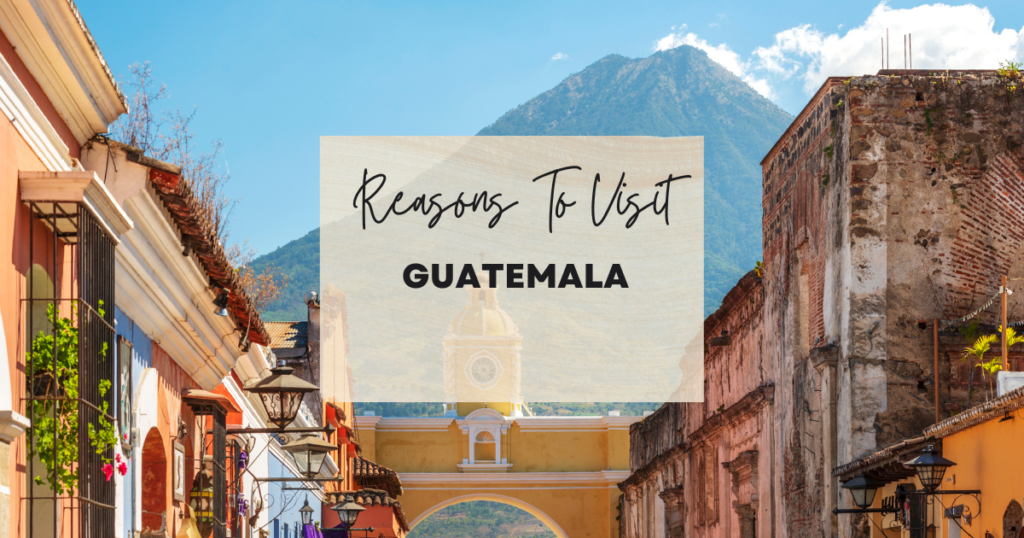Check out Guatemala on your next trip. Make the most of your vacation time in Guatemala, we have compiled a list of our favorite things to do in Guatemala. Explore the top attractions and activities in the best places to go in Guatemala by scrolling down! As a Web 3.0 travel startup, Wondrous Drifter aspires to make a huge impact on the world.
Table Of Content
- Antigua
- Basilica of Esquipulas
- Chichicastenango Market
- Chicken Bus
- Day of the Dead: Kite Festival
- El Paredon
- Fuentes Georginas
- Indian Nose
- Lake Atitlán (Lago de Atitlán)
- Grutas de Lanquín (Lanquín Caves)
- Livingston and Caribbean Coast
- Mayan Ruins of Tikal
- Monterrico
- Museo Popol Vuh
- Museum of Mayan Costumes (Museo Ixchel del Traje Indigena)
- Quetzaltenango
- Rio Dulce (Sweet River)
- Semana Santa
- Semuc Champey
- Volcan Fuego
Antigua
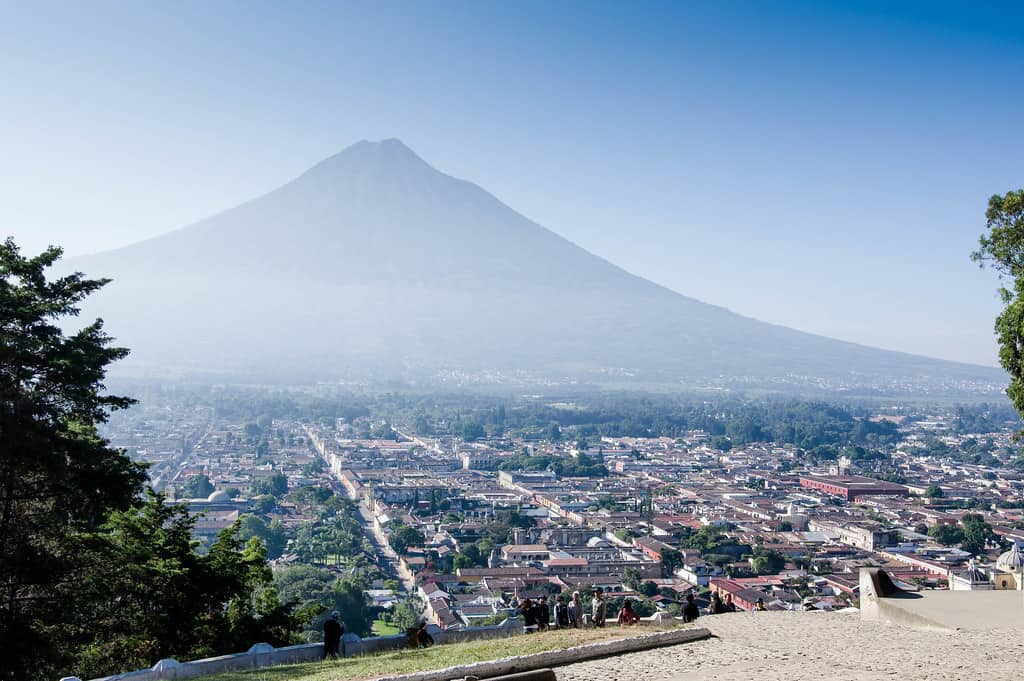
Call this city your home for a while.
Antigua is one of Guatemala’s best-known attractions and Central America’s most picturesque city.
You’ll find a wide range of lodging, dining, and entertainment options that will keep you busy for days in this city.
It’s impossible not to fall in love with this lovely colonial city surrounded by volcanoes.
There are three volcanoes around this former capital, making it an ideal location to see a city that has been untouched by concrete and high-rises.
Despite the influx of tourists and a thriving migrant community, the city retains its unique charm with its flower-decorated bow windows, crumbling ruins of historic churches, and cobblestone streets.
The ruins of older structures have blended cleverly into newer ones, some of which are now hotels.
The city’s museums and lovely old convents are also open to the public.
Walk along the streets paved with cobblestone and past buildings with brightly colored facades.
Address: Guatemala
Basilica of Esquipulas
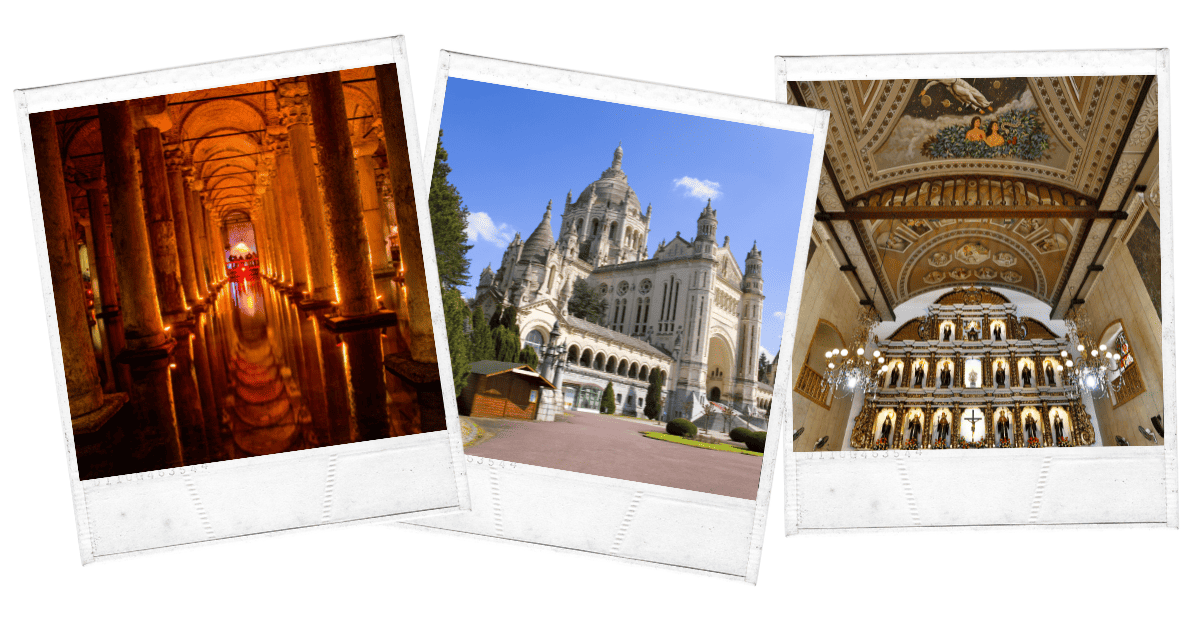
Devote yourself by taking part in the all-year-round pilgrimage!
A church in the city of Esquipulas in Guatemala was built in Baroque style and given its name after the figure of the “Black Christ of Esquipulas” that was kept inside.
Central America’s and southern Mexico’s largest Roman Catholic church has four bell towers, making them unique among American churches.
It is not uncommon to see thousands of pilgrims making the final leg of their trek along the road to Esquilulas on their knees.
A renowned colonial artist from Spain crafted the Christ figure from dark balsam wood in 1594, which has been discolored by centuries of incense smoke.
Pilgrims queue up year-round to see the statue, and the area around the Basilica of Esquipulas is a hive of activity.
Those looking for an outlandish sombrero de Esquipulas, made of straw and embellished with colorful pompoms and fringe, look no farther than the pilgrims who wear it.
Have fun browsing the market stalls selling religious items, local food, and refreshments.
Address: 11 calle, entre 2da. y, 4a. Avenida, Esquipulas, Guatemala
Chichicastenango Market
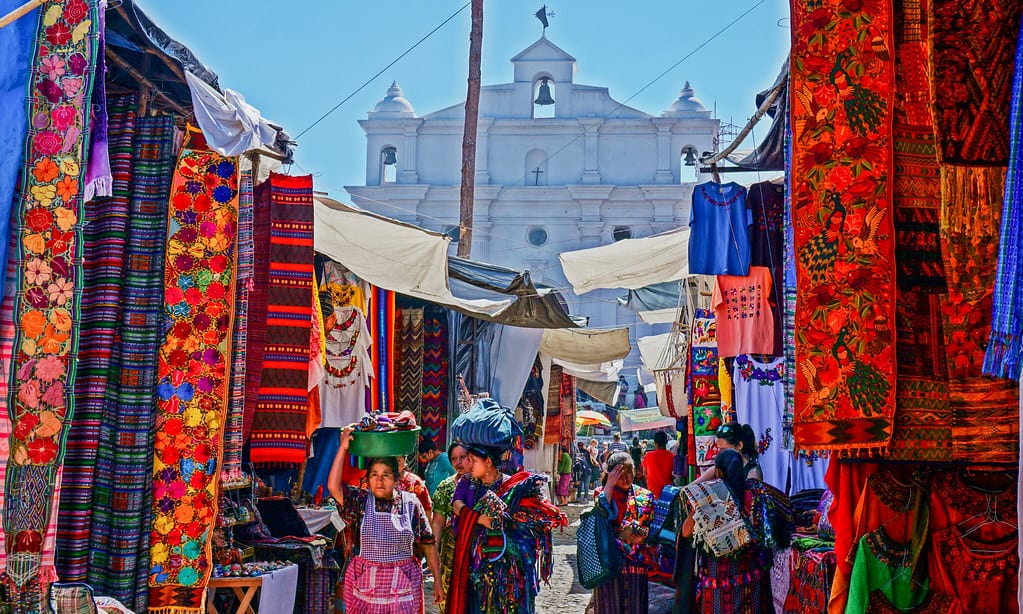
Get a sneak-peek into Guatemala’s most eye-catching market.
Chichicastenango, also referred to by its residents as “Chichi,” is a sizable town encircled on all sides by mountains and valleys.
The ordinarily quiet lanes made of cobblestone come to life on Thursdays and Sundays when one of Guatemala’s busiest and most crowded markets is held there.
It is historically significant since it has a higher concentration of tourists than other Mayan markets (such as Solola).
It continues to function as a working market and a hub for the Mayan settlements of the highlands.
This is a market frequented by the community’s residents and serves as a venue for the sale of ordinary products, fresh produce, and the region’s renowned artisanal textiles.
This market attracts vendors from all around the region, making it an excellent place to observe and photograph people.
As a tourist, it’s fascinating to watch how the locals make a living selling their work to tourists.
Enjoy the view and buy things that only can be found in this market, a great way to experience valuable travel!
Address: 6a Calle, Chichicastenango 14006, Guatemala
Chicken Bus
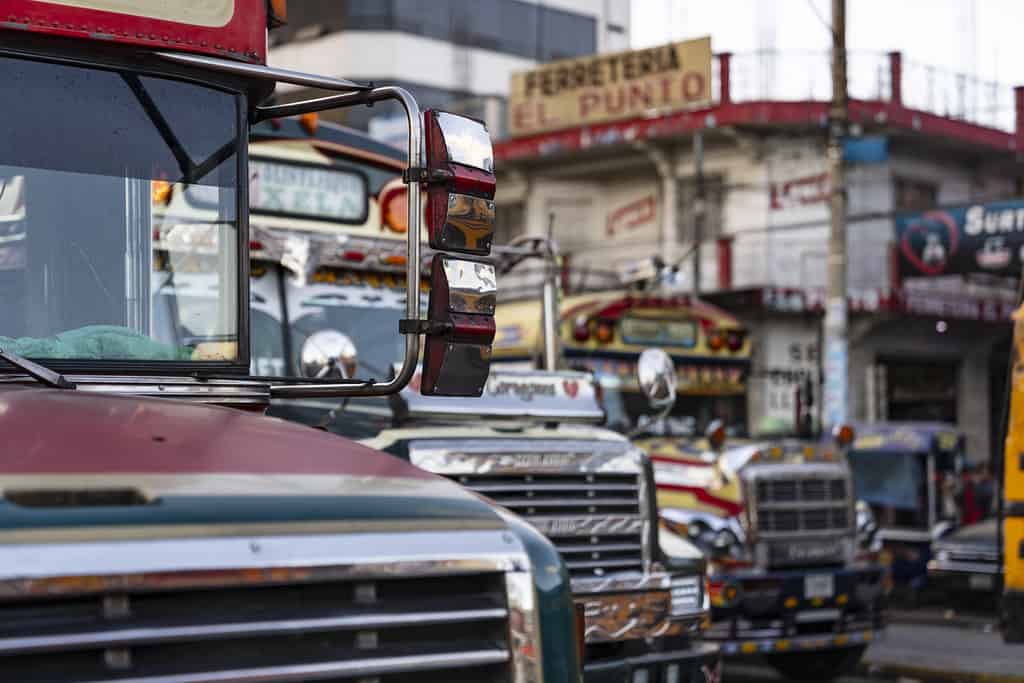
Experience riding on the local Guatemalan transportation!
The approach of a chicken bus in Guatemala is welcomed by a flurry of color, flashing lights, gaudy garb, and upbeat music.
You can see them speeding down the road at full throttle while yelling out the locations of the pick-up and drop-off points.
There are a few different names that Guatemalans call the chicken bus when speaking Spanish, including the names la camioneta, la burra, and el bus.
Locals call the chicken buses that run between Guatemala City and Antigua “la antiguea.”
While for those heading to Panajachel or San Pedro on Lake Atitlán, the chicken buses are nicknamed las pedranas.
They are referred called by foreign tourists as “chicken buses” because they often carry live chickens or other animals on their journeys.
These bright buses stand out not only because of their depictions of animals. A wide range of products is also being carried.
The bus’s roof is crammed full of colorful bultos, or baskets filled with fresh produce, flowers, and fabrics.
Check out this unique ride experience as you ride along with the locals of Guatemala!
Address: Guatemala
Day of the Dead: Kite Festival
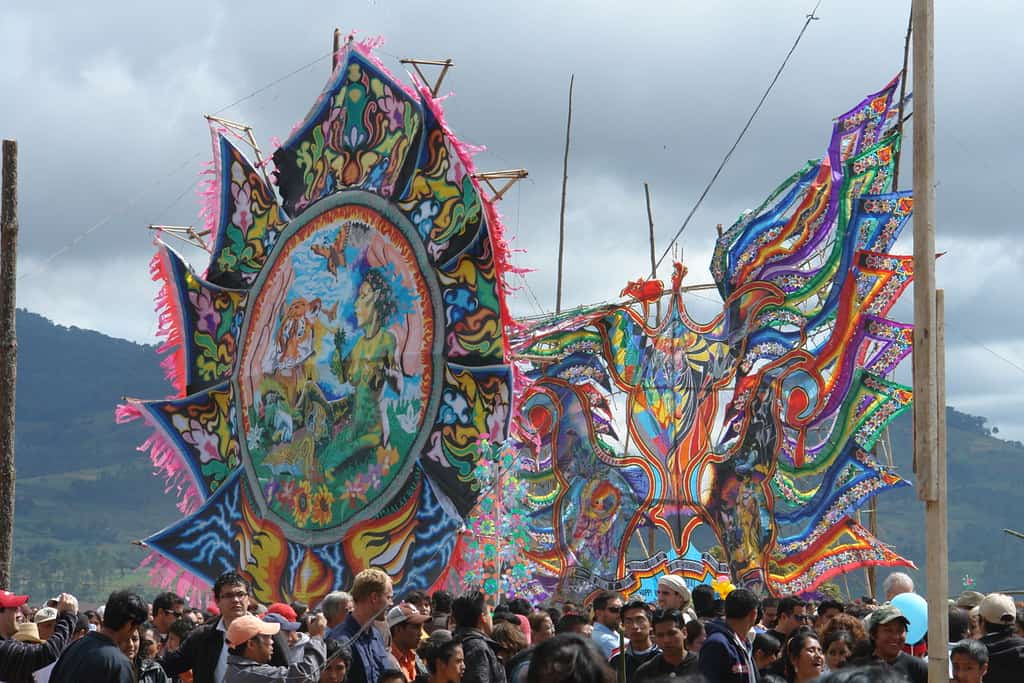
Join the locals as they keep the Day of the Dead alive!
As part of the festivities commemorating All Saints Day and the Day of the Dead, the annual Giant Kite Festival of Sumpango takes place on November 1.
During this one-of-a-kind festival, you won’t want to miss the opportunity to witness the enormous kites that have been diligently crafted by hand by community groups and local artists.
Traditionally, people have believed that when kites fly far into heaven, they speak with the spirits of the ancestors and deliver messages to those in heaven.
Folklore has it that bad spirits wander cemeteries, stirring the graves of those who have passed.
This memorial service for departed family members has a long history, and you’ll learn about it.
Spend the day flying kites and having fun with your family like a native in this great tradition.
You should not miss this festival if you happen to be in town at the right time!
Address: Towns of Santiago Sacatepéquez and Sumpango, Guatemala
El Paredon
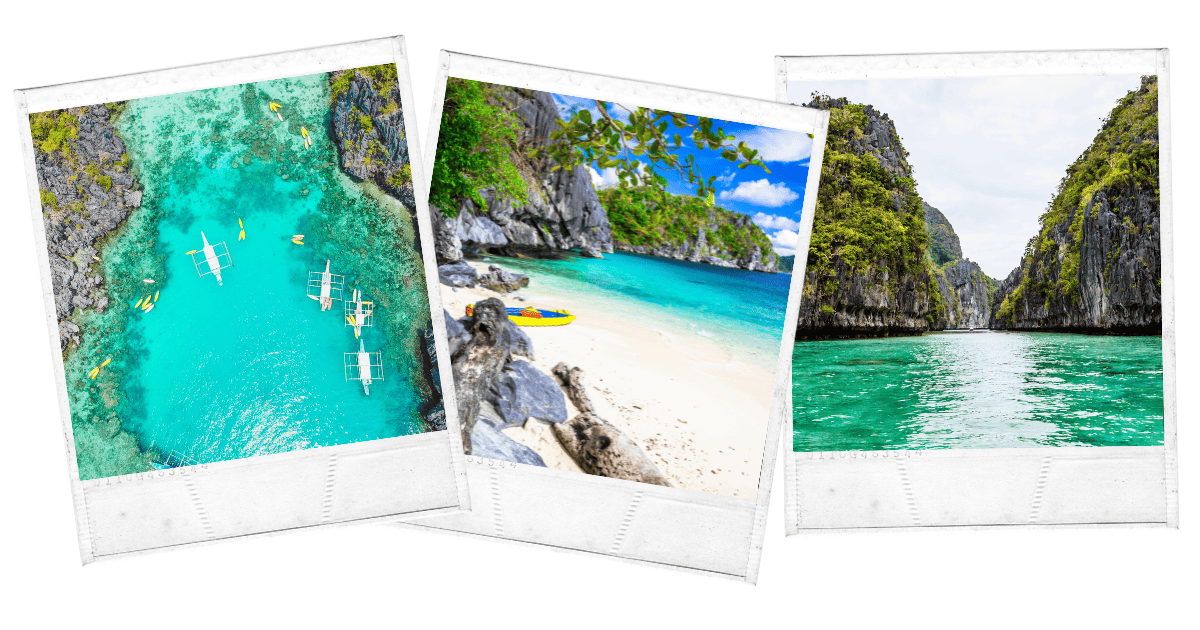
Pick up a board and start learning how to surf the waves!
El Paredon is a popular surfing destination because of the exciting waves, and there are surf schools where novices may learn the basics of surfing.
It has overtaken Monterrico as the most popular spot on the Guatemalan Pacific Coast for beach time, surfing, and relaxation.
As the beach is on the west side, you’ll be able to see some stunning sunsets.
In addition to surfing, El Paredon is a great place to see turtles hatch because it is one of the few locations where many turtles lay their eggs.
A charming and magical sight can be seen from June to November when baby turtles hatch and make their way to the sea.
There are affordable beach hostels in this tiny hamlet on Guatemala’s Pacific coast, accessible via chicken buses or direct shuttles.
Spending a few days on a beautiful beach in El Paredon is an excellent way to relax and recharge your batteries.
If you’re looking for an escape from the commotion of traveling, El Paredon is the ideal destination.
Address: Pacific Coast of Guatemala
Fuentes Georginas
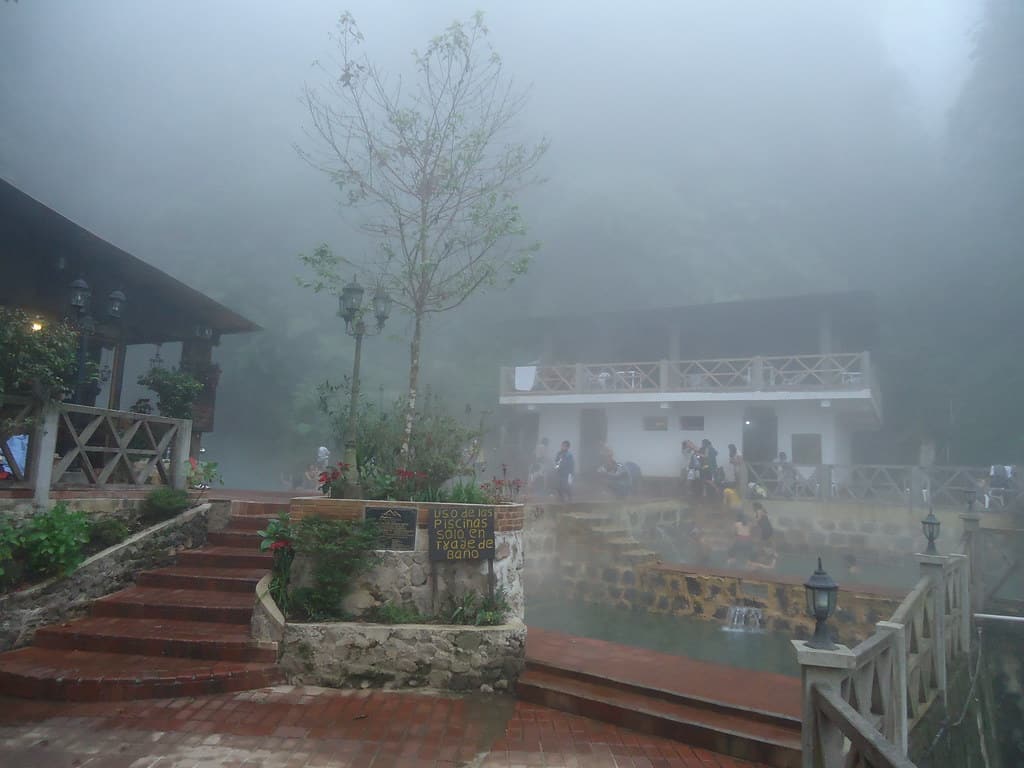
What about a soak in the sulfur springs? Don’t waste your time elsewhere and head over to this place!
Natural wonders abound in Guatemala, including several soaring volcanoes. And in places where there are volcanoes, you’ll also find hot springs.
This resort uses wood and stone construction to blend in with the natural surroundings, even though the pools are man-made.
Attractions include a well-equipped facility with changing rooms and showers, dining facilities, and a swimming pool carved out of rock.
About 9 kilometers from Quetzaltenango, the Fuentes Georginas Hot Springs may be found near Zunil, Guatemala.
In 1902, two workers from Zunil discovered thermal sources. They converted it into a communal bath, where anyone who lived nearby the thermal baths could take a bath whenever they felt like it.
Visit the Fuentes Georginas hot springs in Guatemala as it is a perfect place to rest after a day of hiking in Guatemala.
Address: Zunil, Guatemala
Indian Nose
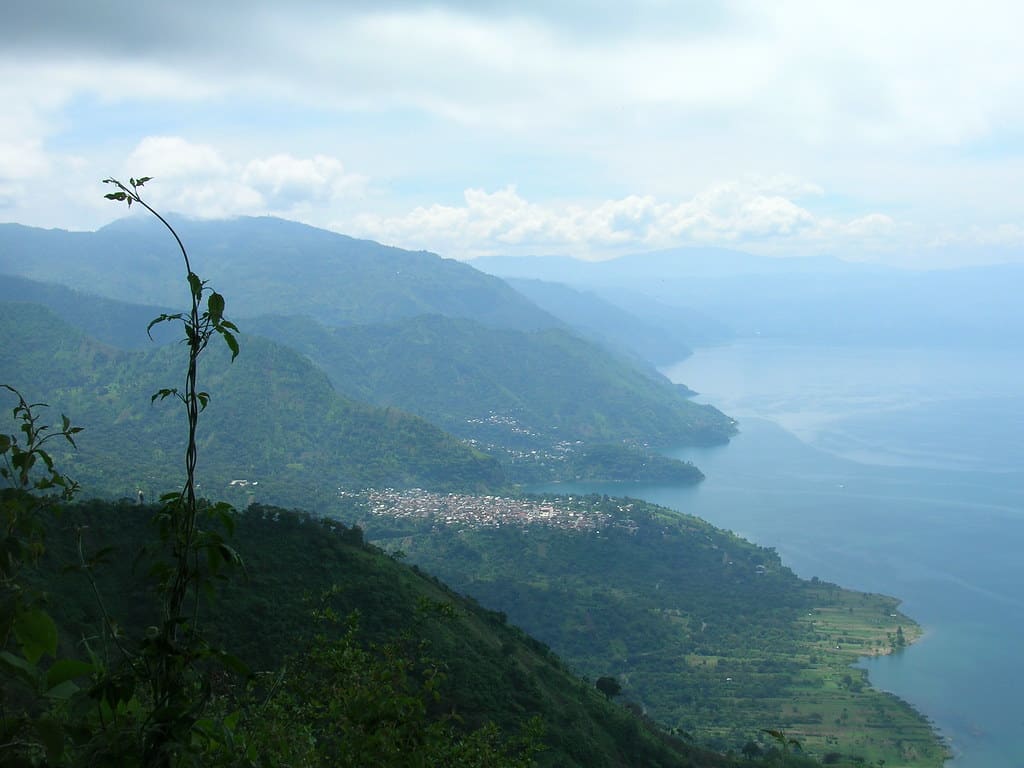
See the most beautiful sunrise that Guatemala has to offer!
Where else would you be able to acquire such a unique vantage point?
Before the sun comes up, if you hike Indian Nose before it sets, you can watch the sun rising behind this chain of Volcanoes.
Indian Nose is the name of a local peak that sits just a few miles from San Pedro on the shores of Lake Atitlan.
As you make your way through San Pedro, you won’t have any trouble finding tour firms willing to take you up Indian Nose.
Due to its short distance and steep ascent, you may anticipate reaching the top of this trek in around half an hour.
Although it is relatively steep, the discomfort you feel will not last long because your adrenaline will take control as you get closer to the top.
An easy hike in one of Guatemala’s most scenic regions is right around the corner, so why not give it a try?
Address: Northwest corner of Lake Atitlan
Lake Atitlán (Lago de Atitlán)
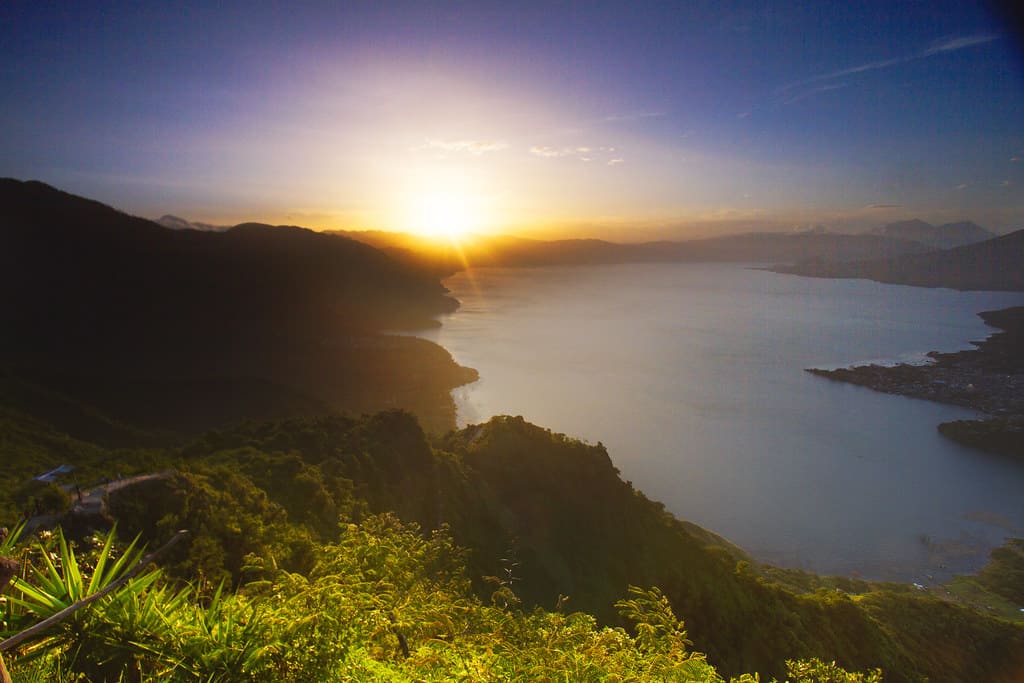
Look no further than this location to find an enticing and relaxing place!
Lake Atitlan has a reputation for enticing visitors to spend more time than planned.
Ironically, despite the abundance of things to do, it is also a wonderful place to unwind and take it easy.
It takes less than two hours to drive to Lake Atitlan from Guatemala City, and it takes less than an hour and a half to get there from Antigua.
Even though it’s not technically a crater lake, the lake basin was produced by a volcanic explosion about 84,000 years ago, making it the deepest lake in Central America.
Kayaking on Lake Atitlan, surrounded by water and looming volcanoes, is the perfect way to soak up the beauty of the lake.
And if you’d prefer just lay on the shore, here is the ideal location to enjoy the views of the lake while reading a nice book.
You will not regret coming all the way here, so don’t hesitate to explore it!
Address: Sololá Department of southwestern Guatemala.
Grutas de Lanquín (Lanquín Caves)
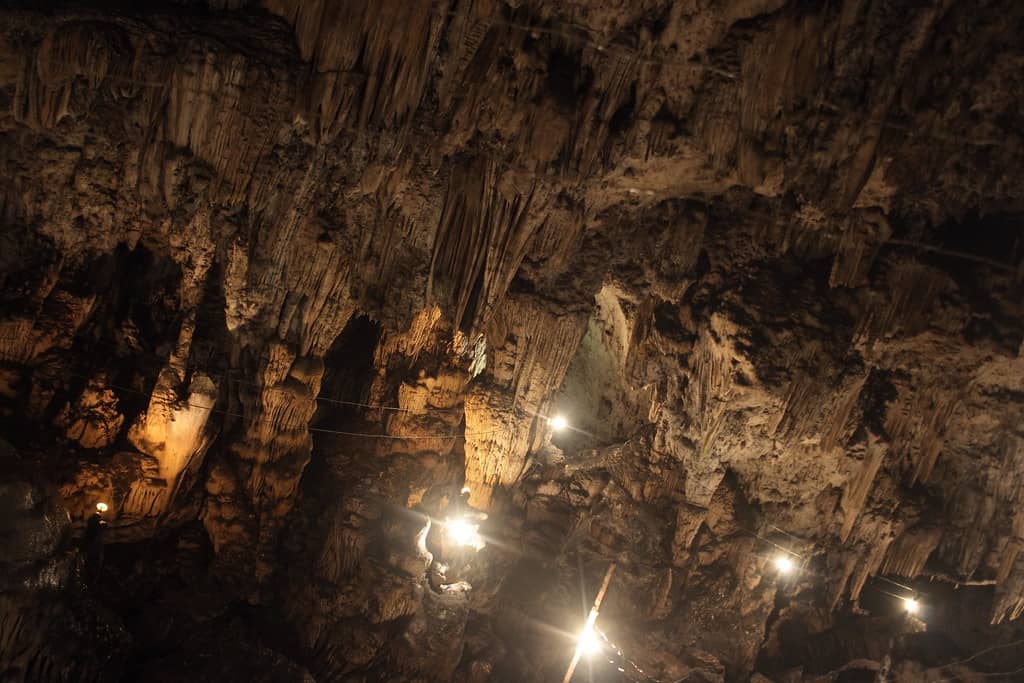
Many different experiences and adventures await those who want to explore the Mayan past.
An underground river flows through the Lanqun Caves, located northeast of Coban.
The limestone caves are home to several lagoons and some unusual rock formations.
The Mayan people consider these structures sacred, and it is thought to be the “heart of heaven” by the Mayan people, and it is claimed that deep within them lies the “secret of the generations.”
It is possible to tour a portion of the cave; however, the terrain is rough, and there is very little light.
Hundreds and thousands of bats call this cave home, and their nightly mass migration from the cave to eat in the neighboring forest is a fascinating sight.
The caves, which the local indigenous people regard as sacred, also feature a religious shrine.
Inexperienced cavers should avoid venturing too far into the caverns, as they have not yet been fully explored or charted.
Visit the cave late afternoon and stay until the sun sets if you’re interested in seeing this unusual location.
Address: H2H6+X63, Lanqúin, Guatemala
We don’t travel to get away from life but rather to ensure that it doesn’t pass us by. Go travel as there is so much beauty in the world. Kick off your world travel by checking out our traveling the world” guide. When traveling the world, a visit to the United States is an absolute must. Fancy an all-American experience? Click here for the popular states to visit in USA.
Livingston and Caribbean Coast
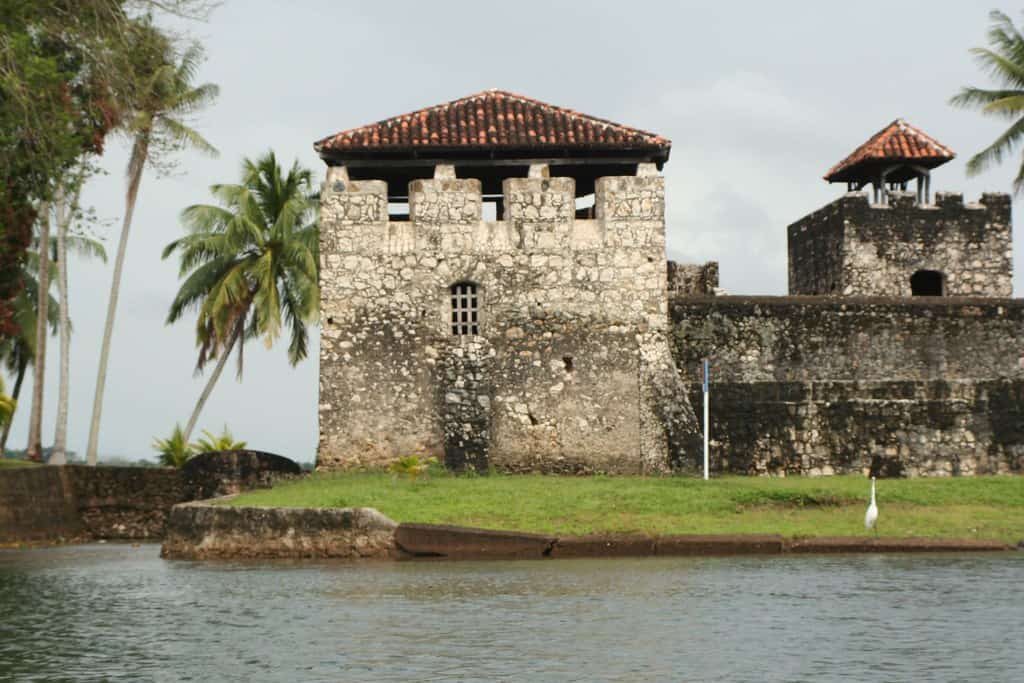
Experience the dual-culture coast when you try to visit this place!
Livingston was initially populated in the 19th century. To escape their oppressors, a group of Haitians set sail for the Caribbean coast of Central America.
For decades, the little community also served as a significant harbor because of its strategic location. Livingston has always been a popular destination for sailors seeking refuge from the Caribbean Sea’s storms.
With its combination of Maya and Garifuna cultures, Livingston is a must-see stop on any trip to Guatemala.
It’s a great place for history and culture buffs to visit. The town’s laid-back attitude makes it ideal for vacationers looking to relax and take it all in.
Livingston is a small town located near the mouth of the Rio Dulce, where the Atlantic Ocean meets the land. The Caribbean flair of the city is well-known: fresh seafood and coconuts abound.
Visiting Guatemala’s Caribbean Coast is an experience you must have while you’re here.
Some hotels and restaurants dot the Caribbean shoreline, with plenty of outdoor activities and a diverse blend of cultural heritage.
Experiencing different cultures in one place, on the coast, will surely be an unforgettable experience as a traveler. Visit Livingston and the Caribbean Coast now!
Address: Livingston, Guatemala
Mayan Ruins of Tikal
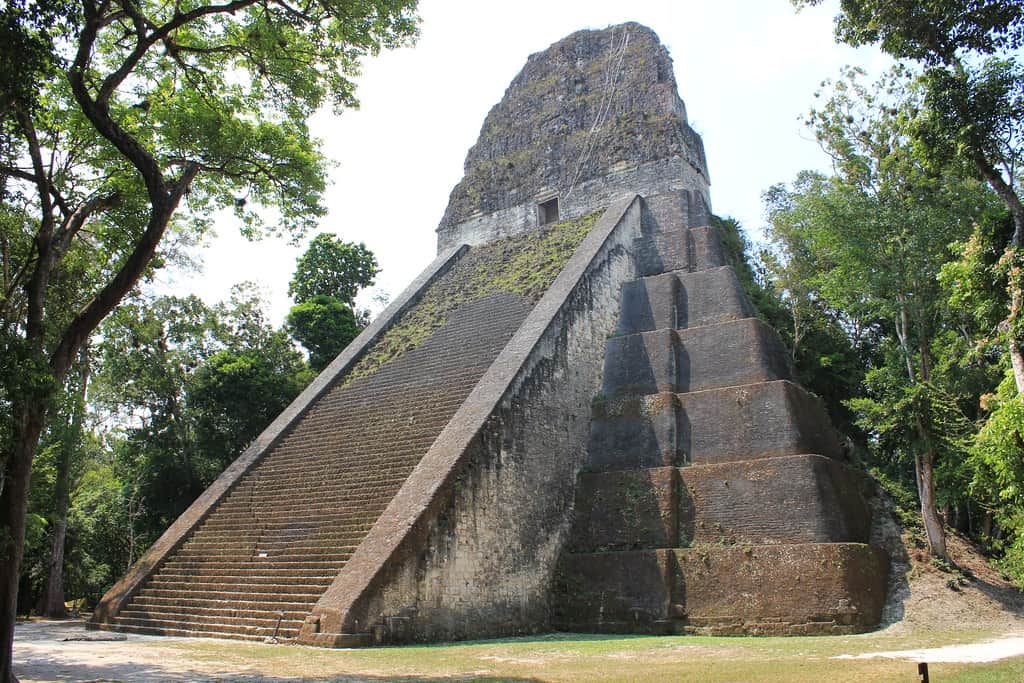
A UNESCO World Heritage Site is one of Guatemala’s popular places to visit!
Tikal is a Mayan ruins complex located deep in the Guatemalan rainforest.
Researchers believe that the more than 3,000 structures on the site are from a Mayan metropolis called Yax Mutal, the capital of a great Mayan dynasty.
Some of the structures at Tikal date back to the 4th century B.C.
Tikal is located in Guatemala’s Peten region, home to one of Central America’s most dense rainforests. It was established in 1966 and became Guatemala’s first national park.
The ruins of Tikal’s palaces, residences, offices, platforms, and inscribed stone monuments are all composed of limestone. You can also find various temples within the area.
During the 1950s, archaeologists and historians working on the site’s restoration constructed an airfield for their convenience.
On the other hand, Tikal National Park is now connected to the rest of Guatemala by a system of roads.
Visit this once-in-a-lifetime experience in Guatemala, and it will surely amaze you with its great history!
Address: Flores, Petén Department, Guatemala
Monterrico
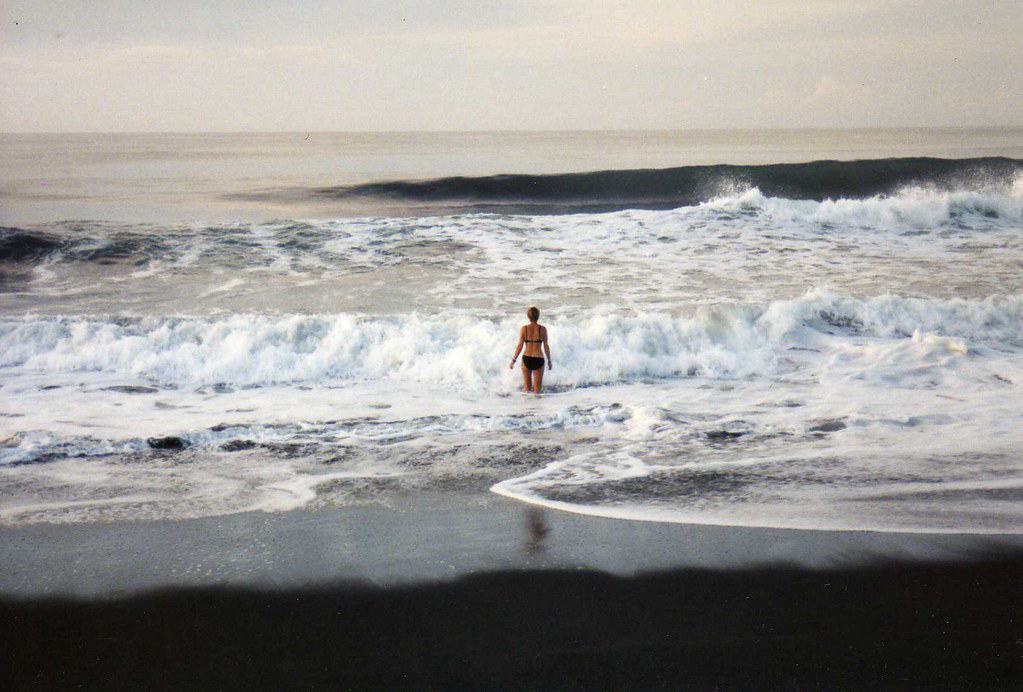
Be in a different place by not living in the country you are visiting!
Monterrico is clearly different from Guatemala and the rest of the country.
Thanks to the quaint wooden-slat, thatched-roof architecture, and awe-inspiring volcanoes, there is a tropical taste in the air here.
Antigua and Guatemala City are becoming increasingly attractive destinations for foreign tourists looking for a beach vacation.
It’s pretty calm during the week, but Guatemalan families descend in droves on the weekends and holidays.
If you’re looking for a quiet beachside town with a wildlife reserve and two hatcheries for sea turtles and caiman hatchlings, Monterrico is the place for you.
At times, the waves crash into the black volcanic sand at an unusual angle, creating an exciting scene.
This wave print indicates the presence of riptides, which have claimed the lives of swimmers at this beach.
As part of the 118-mile (190-kilometer) Canal de Chiquimulilla, a network of mangrove swamps and canals can be found outside the town.
See this rare place and have a different scenic view of Guatemala!
Address: Monterrico, Santa Rosa, Guatemala.
Museo Popol Vuh
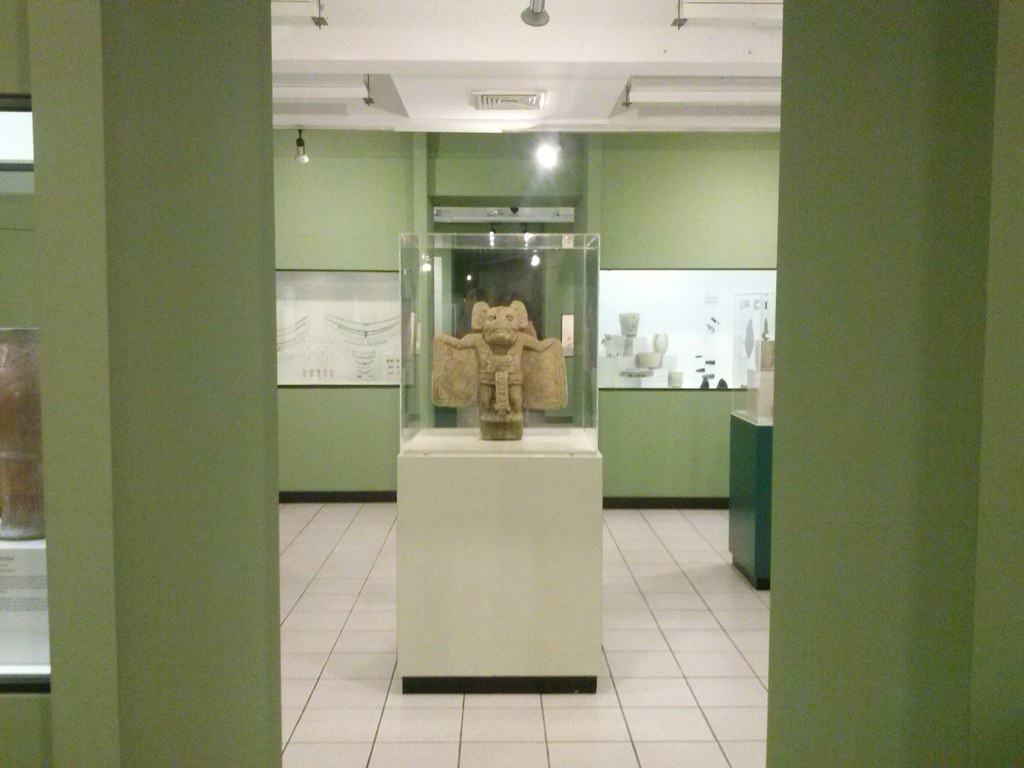
Are you curious to know more about the Mayan rich cultural heritage? Learn it here!
The Museo Popol Vuh is an excellent spot to spend a few hours in Guatemala City if you have some spare time.
This is one of the most important Mayan art museums in the world, with a significant and extensive collection of Mayan colonial art.
The Museum’s modest rooms include a diverse collection, from stone sculptures to pottery and the Lord Bat sculpture.
This Museum houses what is widely regarded as one of the most outstanding ceramic collections in the country.
This Museum’s galleries are arranged chronologically, beginning with Paleo-Indian artifacts and concluding with colonial exhibits.
Additionally, there are some antique textiles and a replica of the Dresden Codex, one of the Maya’s most prized painted manuscripts.
Before beginning your journey around Guatemala, visit the Museo Popol Vuh to learn more about the Maya’s intricate belief systems and social structures.
Address: 6 Calle Final Zona 10 Interior Universidad Ciudad de Guatemala, 01010, Guatemala
Museum of Mayan Costumes (Museo Ixchel del Traje Indigena)
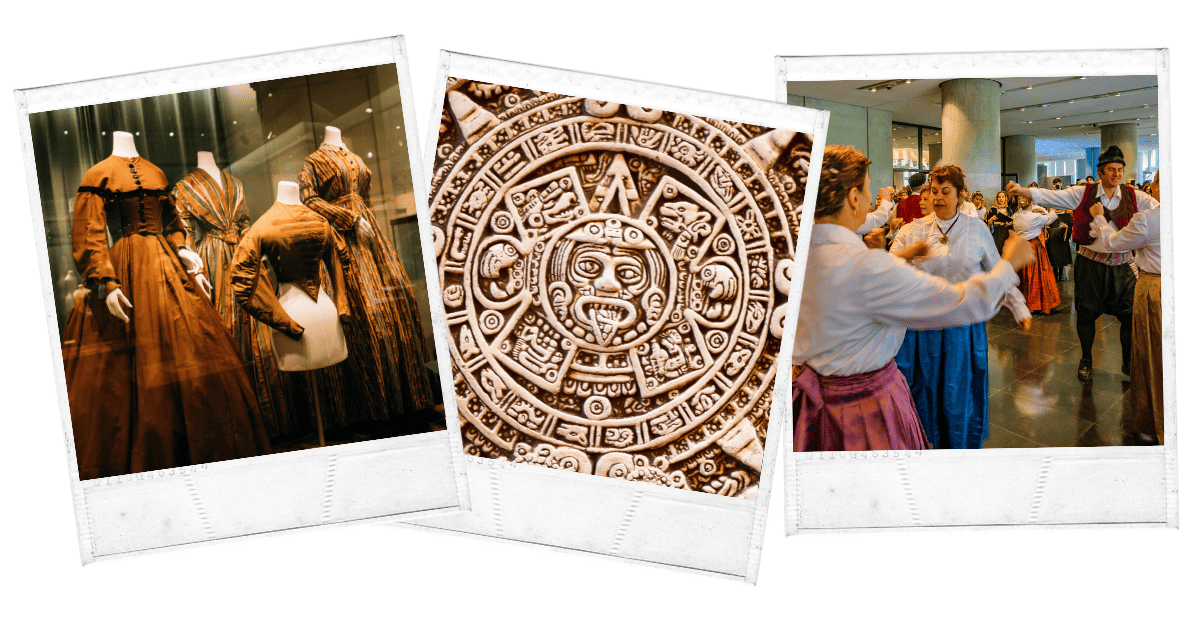
Named after the Mayan goddess of fertility and weaving, admire the classic Guatemalan clothing in this Museum!
Nearly 1,000 pieces of Guatemalan apparel, jewelry, and ceremonial textiles are housed in the Spurlock Museum’s most extensive research collection.
Maya villages in 14 states of Guatemala are represented by these textiles, which date back to the 20th and 21st centuries and span 80 settlements.
The different clothing and traditional weaving patterns worn by members of each community help identify them.
It has taken many years for the Museum’s collection to grow through donations and purchases.
The various colors and types of yarn and thread used in these textiles and the traditional designs and motifs specific to each village all go into their creation.
After extensive thought and consultation, the Ixchel Museum of Mayan Costumes-Guatemala was moved to its current location, primarily with textile curators from the Metropolitan Museum of Art in New York City.
People tend to find the textiles on display to have a much deeper meaning if they are aware of their history. Learn about it on your visit.
Address: 6ta Calle final zona 10 campus Universidad Francisco Marroquin, Cdad. de Guatemala, Guatemala
Quetzaltenango
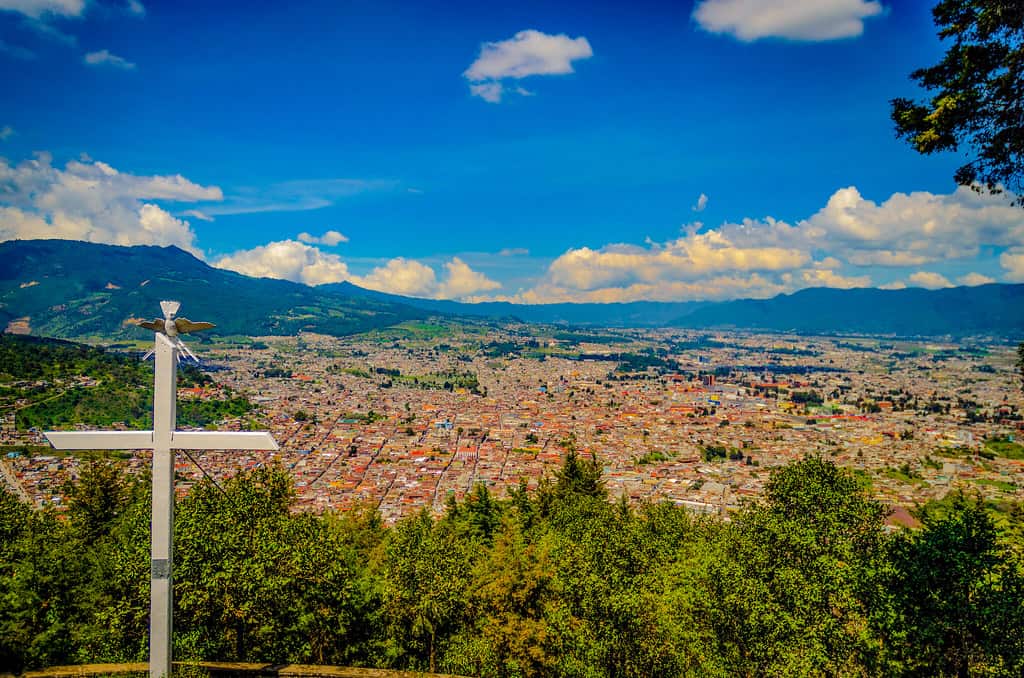
Spend your time in a city with everything a traveler could want already on hand!
The second-largest city in Guatemala, Quetzaltenango, is sometimes known as Xela or Xelaju.
The town has many sights, and it’s also a wonderful starting point for exploring Guatemala’s Western Highlands or Lost Altos.
There is a wide range of scenery in the neighboring department, which is located in southwest Mexico.
There are a lot of volcanoes, hot springs, valleys, mountains, and rivers to be discovered in this region.
In the early 1500s, Spanish Conquistadors arrived in Guatemala to capture the country.
The city was already around 300 years old, and they named it “Xela,” which is still being used by most of the residents.
Xela is one of the highest cities in Central America, sitting at around 2,300 meters (7,546 feet).
It is highly distinct from the ones found in the nation’s capital, Antigua.
The city is peaceful, welcoming, and peaceful at night. It can be a boisterous night in the town if the roosters kept by numerous residents are added in. Consider bringing earplugs if you’re prone to insomnia.
Quetzaltenango is calling your name; come to this location and be amazed by everything it offers you.
Address: Quetzaltenango, Guatemala.
Rio Dulce (Sweet River)
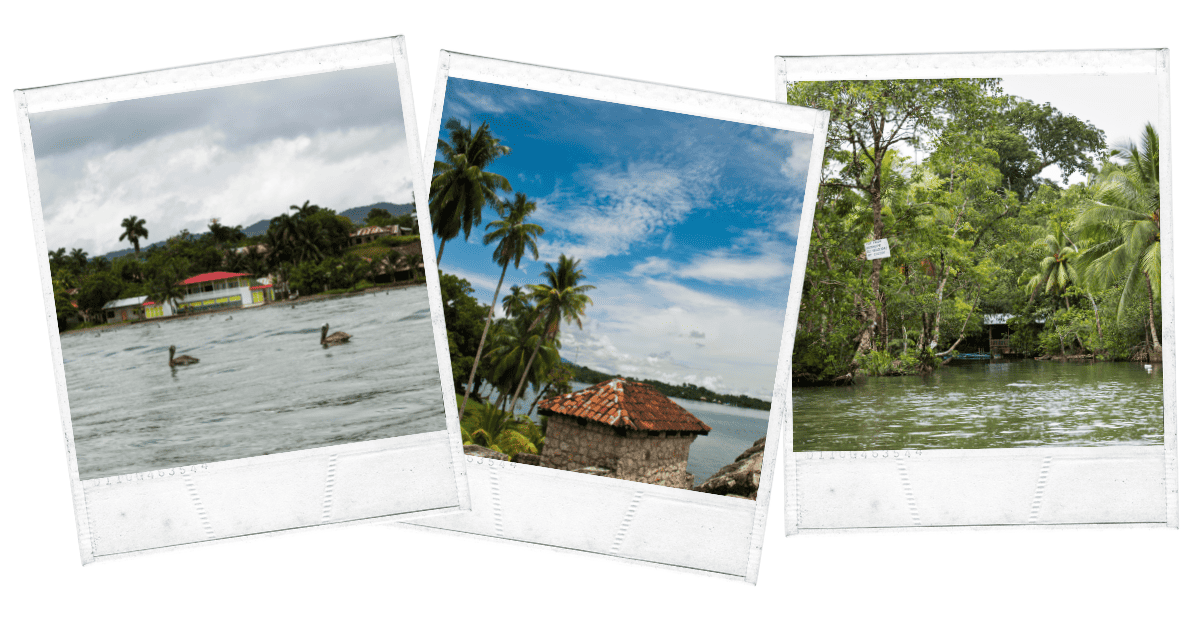
Do you long for some time spent exploring nature on your own?
The Rio Dulce (Spanish for “Sweet River”) is a river in the northeastern Izabel department.
Lago de Izabal, which borders the department, contains Rio Dulce as one of its many tributaries.
El Rellenos is connected to the town of Lago de Izabal via a bridge that crosses the Rio Dulce.
Boats owned by locals make it easy to get to all destinations.
Tourists flock to Rio Dulce because of its beautiful scenery and ease of sailing through the Caribbean.
Cayucos from adjacent communities also make their way to the town via this route.
To put it another way, Guatemala is an excellent choice for budget-conscious hikers, ecotourism enthusiasts, or anyone looking for a new experience.
Rio Dulce features Castillo De San Felipe as one of its attractions. It is a fort that was built to protect the town from pirates in the 17th century.
Within the Rio Dulce National Park, the fort can be reached by foot in about an hour.
Check out one of the many rivers of Guatemala, and be part of the few to visit this unique river style!
Address: Department of Izabal, between Lake Izabal and Amatique Bay.
Semana Santa
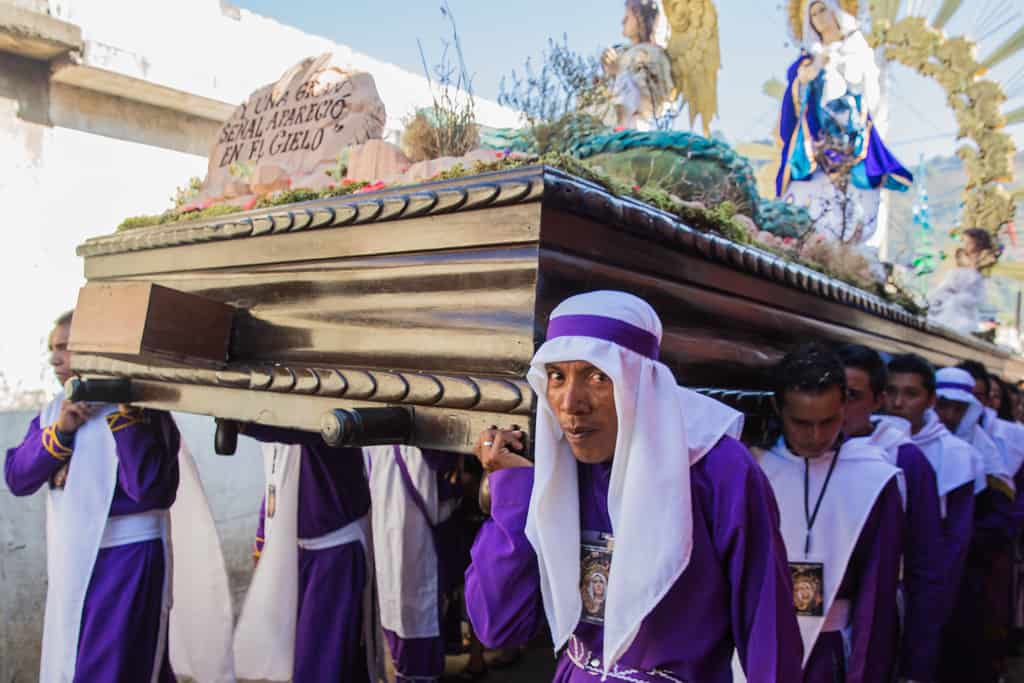
Do you ever find yourself wondering how the Catholic Procession of Images got its start?
People have celebrated the holy week known as Semana Santa for many generations.
Every country has its own distinctive method of celebrating Holy Week.
In Europe, the tradition dates back to the Middle Ages. Even certain parts of Africa were affected by it as time went on.
In Santiago de Los Caballeros, now known as Antigua Guatemala, the first Christian procession in Guatemala was held on March 10, 1543.
A religious tradition that dates back hundreds of years has been practiced here.
In many Latin American Christian traditions, this religious syncretism (sincretismo religioso) is still evident, as Catholic and indigenous images and symbols are blended into a single event.
According to UNESCO, Holy Week in Guatemala has been designated an intangible national cultural treasure. In other words, as long as people keep up with the custom, it will continue to exist.
Some of the religious artifacts carried in the processions date back more than 500 years.
Some came from Spain and Europe, while others were created in the Americas’ former Spanish possessions.
Be part of the original history and experience Semana Santa in Guatemala!
Address: Antigua, Guatemala
Semuc Champey
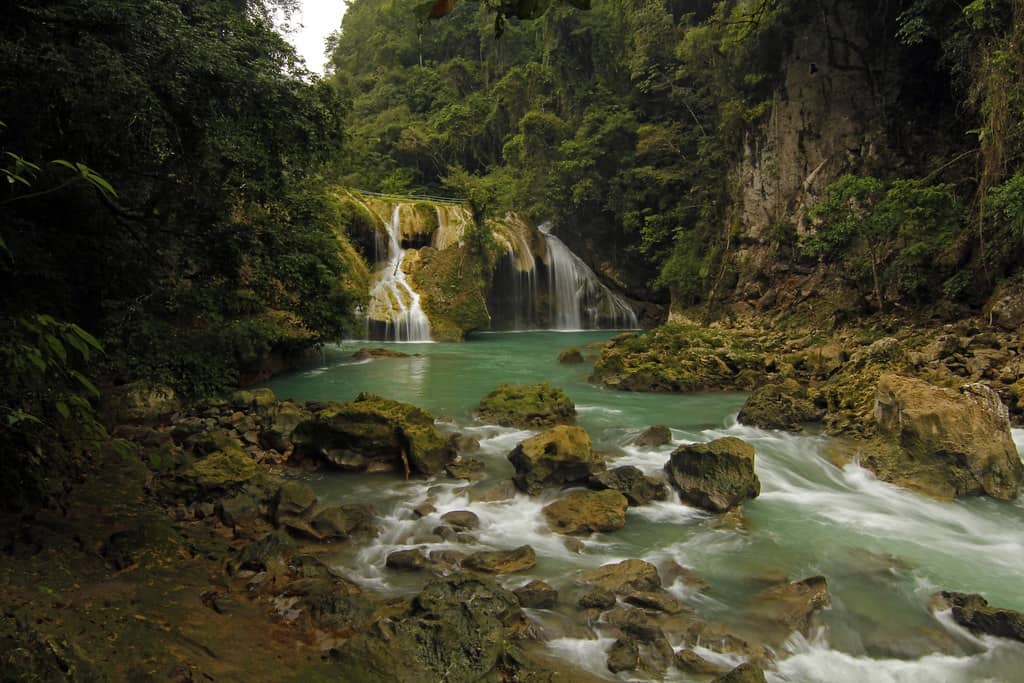
This beautiful spot can be hard to get too deep in the jungle, but it’s worth the trouble.
Semuc Champey, a 300-meter-long limestone bridge with six turquoise-blue water pools, is tucked away in the beautiful highland wilderness approximately 11 kilometers from the adjacent town of Lanquin.
People come to Semuc not just to swim in the pools but also to explore the surrounding water caves or to tube down the Cahabon River, which vanishes beneath the limestone bridge before reappearing miles down the riverbanks.
The Semuc Champey natural monument is inaccessible to all but the most challenging four-wheel-drive vehicles.
Still, it boasts six gorgeous turquoise pools arranged in tiers, a massive cave network with underground waterfalls, and breathtaking scenery.
Accommodations in and around Semuc Champey cater to a wide range of budgets, interests, and preferences.
For lodging when visiting Semuc Champey, you’ll have to choose between a hostel in Lanquin or a jungle lodge closer to the Semuc itself.
Several visitors to Guatemala described it as the city’s most stunning landmark.
Better gear up with your hiking and swimming wear to maximize the enjoyment of visiting this place!
Address: Lanqúin, Guatemala
Volcan Fuego
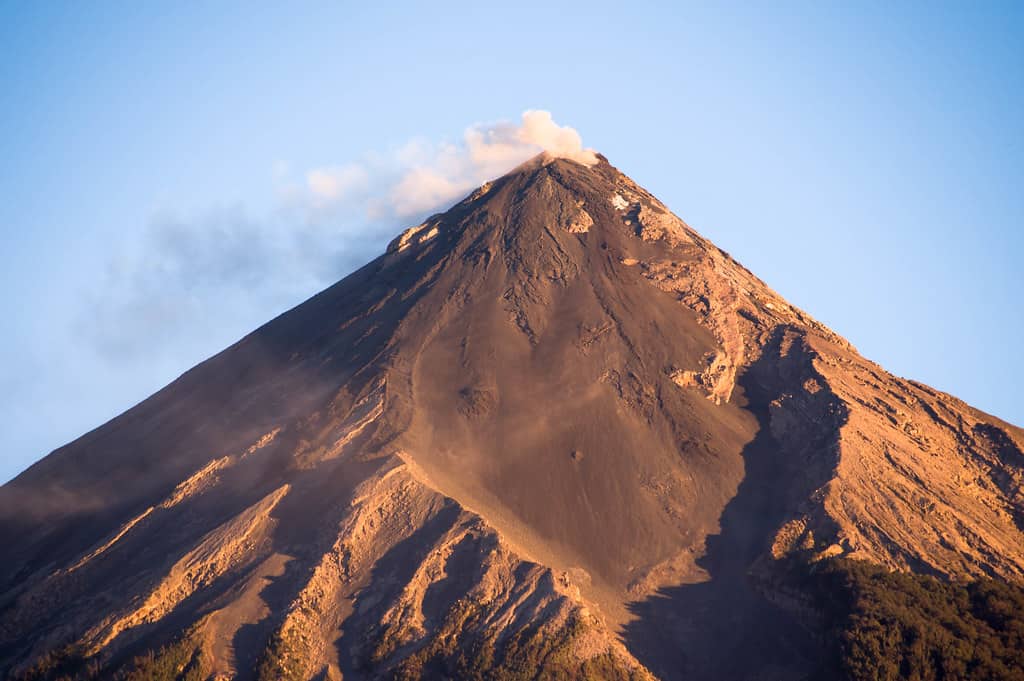
Drive through a beautiful scenic view of the most active volcano in Central America!
Guatemala’s most active volcano, Volcán Fuego, is one of three huge stratovolcanoes that loom over Antigua.
In between the 3763-meter-tall Fuego volcano and its sibling, Acatenango, sits the scarp of an older volcano, Meseta.
The vast Escuintla debris-avalanche deposit, which reaches about 50 kilometers along the Pacific coast, was formed by the collapse of the ancestral Meseta volcano around 8500 years ago.
The present Fuego volcano followed, continuing the southerly movement of volcanism that began with Acatenango.
El Fuego bubbled eight kilometers away from San Miguel Los Lotes in January 2018.
Yet, locals on the nearby farms of coffee, bananas, corn, and other products went about their business as usual.
About 7,000 rounds are played here each year, taking in the scenery and occasional rumbles of El Fuego.
It might be scary to see an active volcano near you. Still, you will never exchange experience and the exceptional view of this volcano growing because of its eruptions!
Still unsure to make Guatemala your next destination? Click here for all the reasons to visit Guatemala at least once in your lifetime here.
Address: Boarders of Chimaltenango, Escuintla and Sacatepéquez, Guatemala

